—by Matt Milkovich
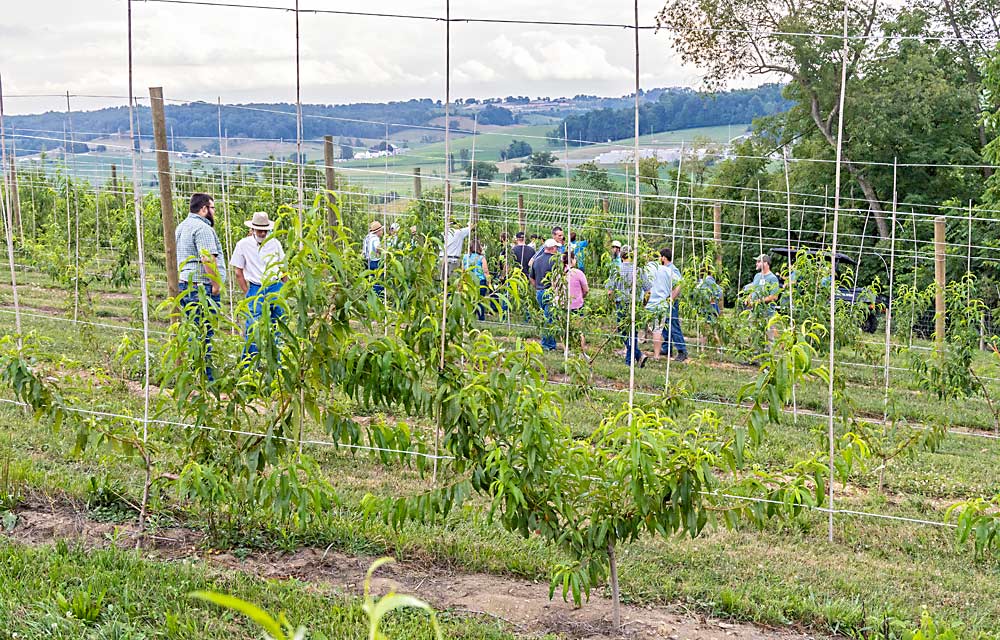
Ohio is dipping its toe into planar peaches.
Inspired by a recent International Fruit Tree Association tour of Michigan, two Ohio peach growers decided to try trellised, two-dimensional peach plantings, in hopes of boosting yields per acre and reducing the number of picks.
They shared their experience with other interested growers when the Ohio Produce Growers and Marketers Association got a look at one of the planar peach plantings in July at Hillcrest Orchard of Walnut Creek, where the Hershberger family hosted OPGMA’s annual summer field day.
Merle Hershberger and his sons grow 70 to 80 acres of fruit, including 10 acres of peaches, on the picturesque slopes of Eastern Ohio’s Amish country. His older peach blocks are freestanding, open-center trees, but the newest block is 3 acres of two-dimensional, multileader peaches planted in spring 2023 on former apple ground.
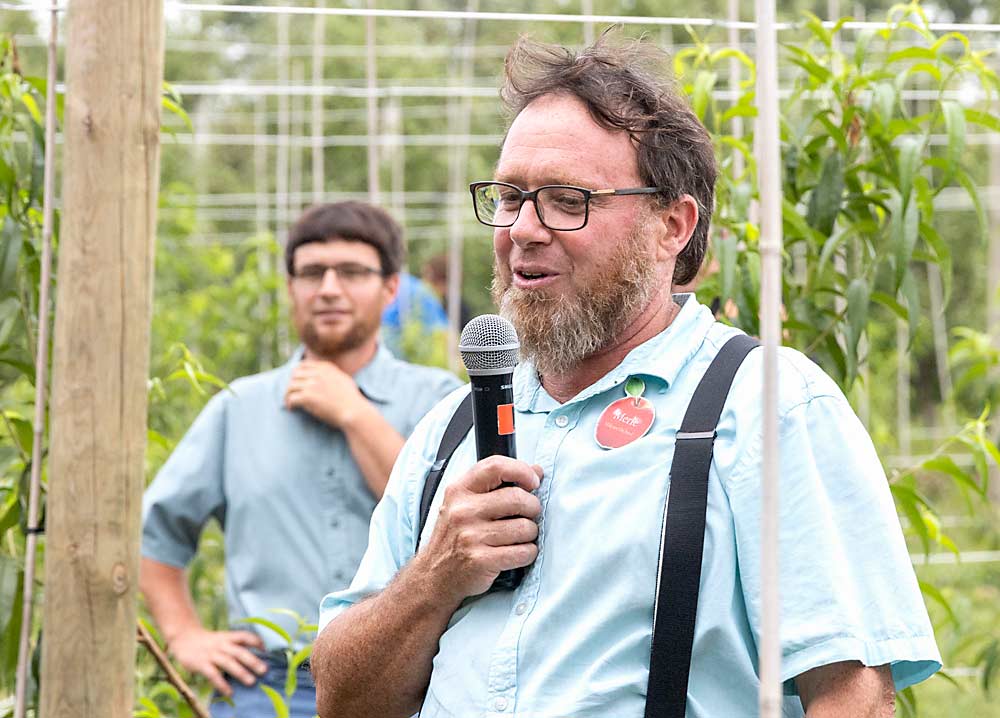
Hershberger’s son Mark said the trellised block is a mix of Controller and Lovell rootstocks and Madison, July Prince, Contender and Redhaven scions.
After planting, they cut the trees down to about knee height and let them grow for a year. At bloom time the following spring, they chose two leaders to train along the bottom wire. In early July, they did more trimming and started training the leaders to grow vertically along bamboo sticks fastened with rubber ties. They’re aiming for three leaders per tree. They plan to start fruiting the trees next year, at third leaf.
“We’re hoping to cut back on labor from now on,” Merle said. “But this was new for us. It’s going to take a little time to get our system in place.”
Establishment costs are high, and the trimming and training is time-consuming and labor-intensive.
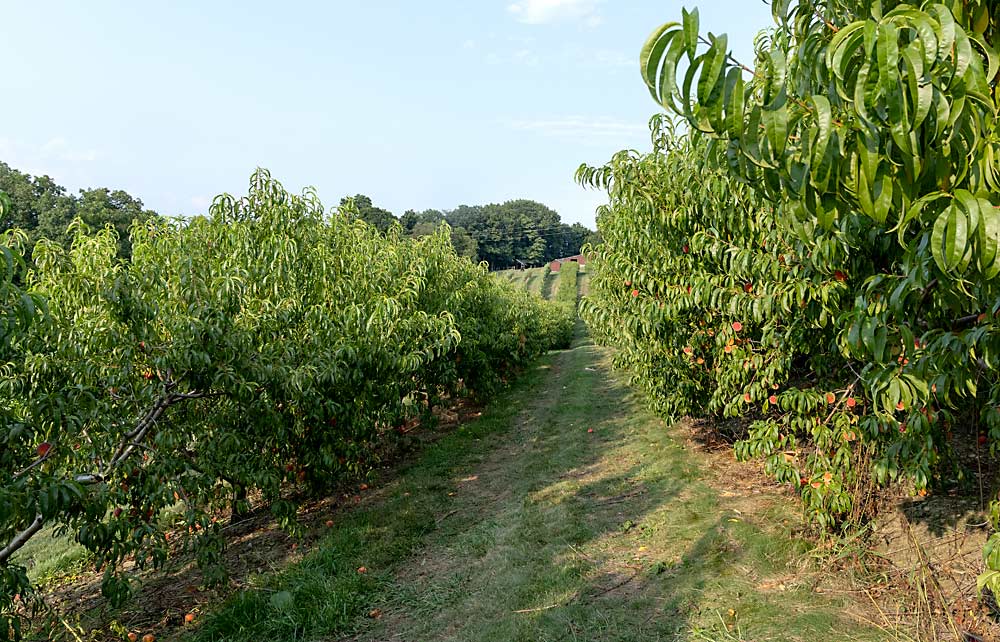
“If you don’t have a lot of labor or time to train them, don’t try it,” Mark said.
The goal is greater yield per acre and more uniform ripening — cutting the number of pickings in half.
“One thing I really like about this is it gives us a system,” Mark said. “We know we want the leaders to grow along the bottom, then grow up. We want to make a wall. Whether it’s going to work or not, we don’t know. Give us a few more years.”
Isaac Yoder, who runs an orchard about 20 miles north of Hillcrest Orchard, planted his own trellised 3-acre block in spring 2023. He grows 7 acres of peaches total. His older peaches are freestanding and trained to quad V, a system he uses because of its simplicity.
“We like quad V,” he said. “We just think we can improve it.”
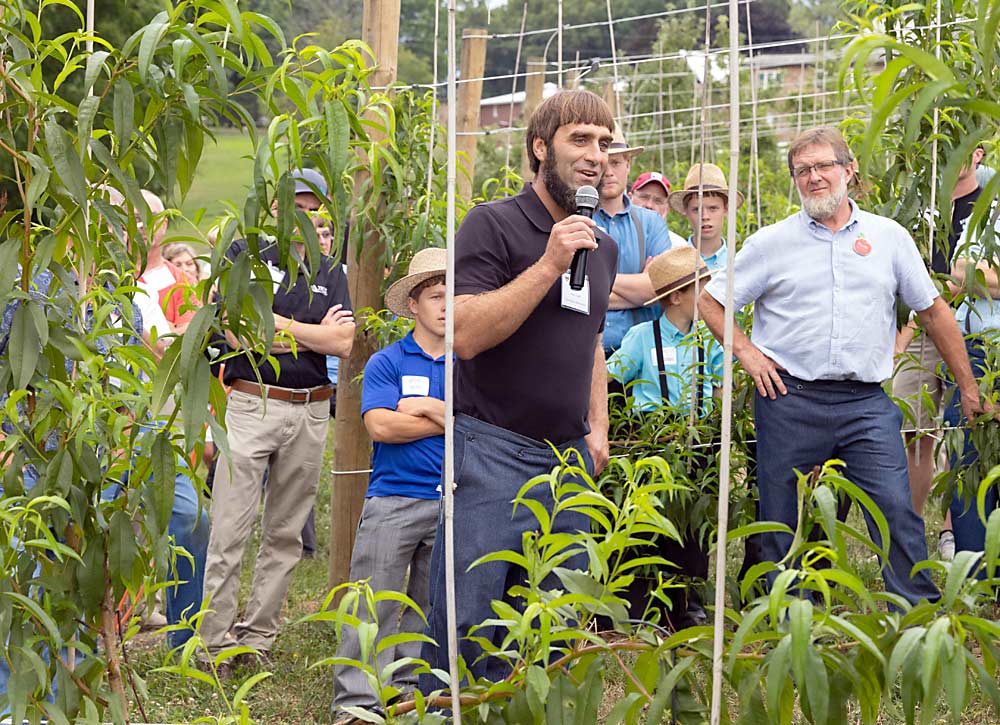
Quad V trees tend to block sunshine from hitting the lower branches, which limits fruit production without intensive summer pruning. A two-dimensional system captures sunlight from top to bottom. All that sun sizes up and colors fruit, and it leads to better renewal growth, he said.
Like Hershberger, Yoder wants greater yields and fewer picks from his trellised block, which consists of Contender, Madison and Redhaven scions on Controller 6 and Lovell rootstocks, held up by wooden posts and plastic wire. Yoder also plans to start fruiting next year.
Yoder is letting the outside scaffolds grow first, until they’re above his head, then he’ll start the third scaffold in the middle, “because that one always catches up,” he said. With a 7.5-foot by 13-foot planting distance, each tree will have three uprights about 30 inches apart.
Peach tree growth is extremely vigorous. If a spring frost kills blossoms (an annual concern), Yoder might have to completely renew the scaffolds to tamp down the vigor. He said other growers he has talked with are concerned about establishment costs and bacterial canker forming in wire wounds.
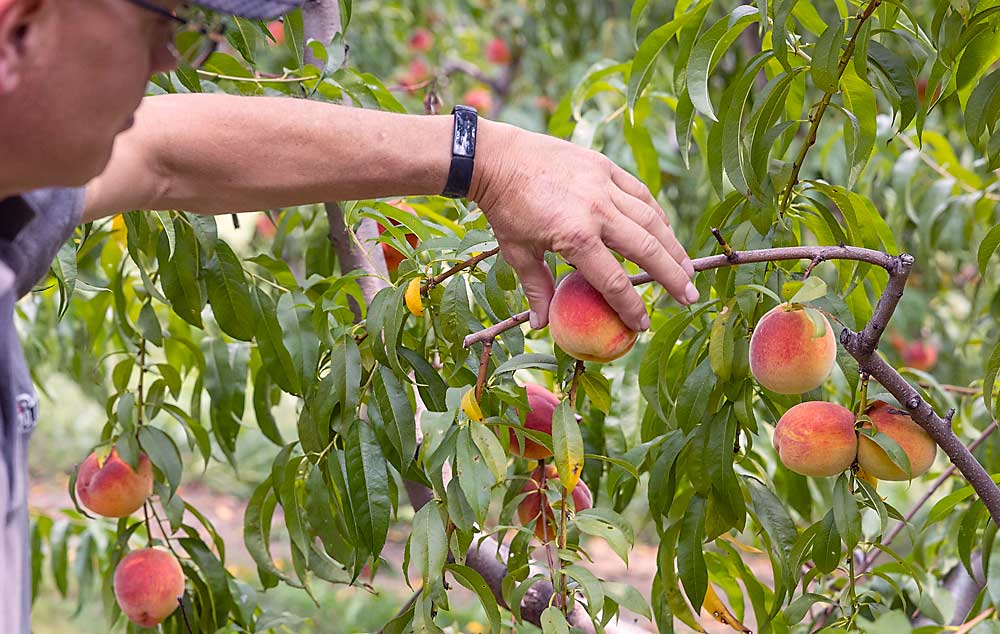
Grower Joe Burnham saw Hershberger’s trellised block at the OPGMA field day. Burnham’s family orchard in Berlin Heights is about 80 miles northwest of Walnut Creek, just a few miles south of Lake Erie. He grows on flat land, and the big lake moderates temperatures and provides some frost protection.
Burnham grows about 12 acres of peaches, all on quad V. He likes quad V, but crop load management is labor-intensive. He’s interested in the benefits of a planar system but first wants to study the potential pitfalls, he said. •

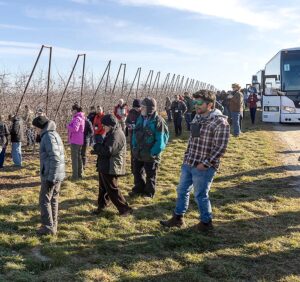






Leave A Comment